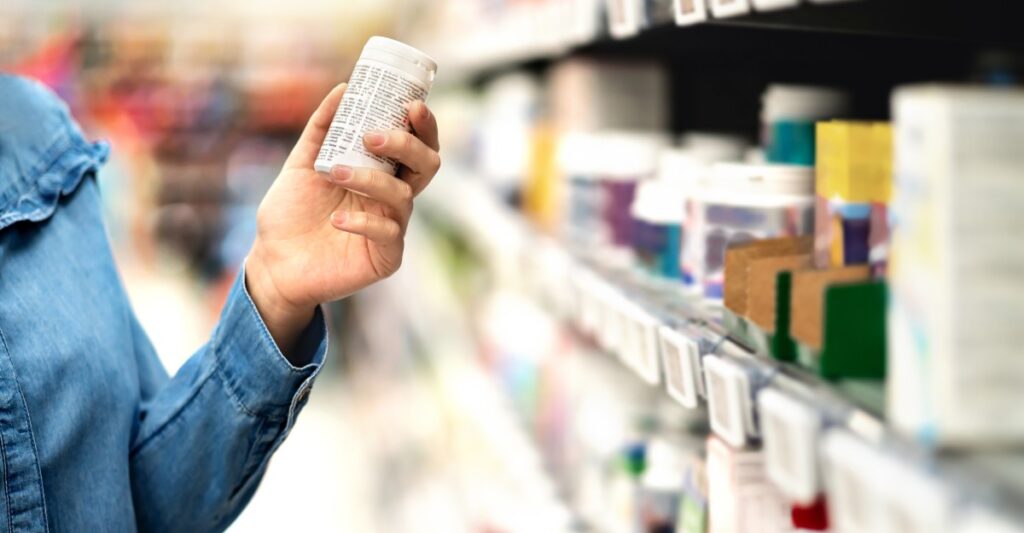Pharma Labeling Basics: Why It’s Essential & Who It Affects [GUIDE]
Pharmaceutical drug labels are required for every drug. But why are they important? In this guide, we explore the role pharma labeling plays and why it’s so essential.

In order to market and sell a drug, pharmaceutical companies must gather and disseminate all the data for the label and submit it to regulatory authorities for approval. The intent is to show that a drug has efficacy, meaning it works and benefits a population in some way.
But there is more to a pharmaceutical label than proving a drug is effective. Let’s look at the two biggest purposes labeling serves.
2 Main Reasons Why Pharmaceutical Labeling Is Important
1. Pharmaceutical Labeling Improves Patient Safety
Medicines exist to benefit consumers by treating their symptoms. But if a patient takes the wrong drug, there can be dire consequences. So, the primary driver of pharmaceutical labeling is to keep patients safe.
There are three groups that are ultimately responsible for following pharmaceutical labels to ensure patient safety: doctors, pharmacists, and patients themselves.
Doctors
A doctor prescribes a drug to treat a patient’s symptoms. But for a doctor to know which drug is right for the patient’s needs, they rely on drug labels to guide them in the right direction. They take the patient’s medical history into account when prescribing a drug to ensure there are no adverse reactions. That prescription then goes to the pharmacy to be filled.
Pharmacists
Pharmacists act as quality control to make sure the medicine a doctor prescribes is safe for the specific patient. This is crucial, as doctors may accidentally prescribe a drug that’s dangerous to the patient. In the United States alone, the FDA receives over 100,000 reports of medication errors each year. Therefore, it’s up to the pharmacist to read the label and determine if the drug makes sense for the patient to take.
Pharmacists can also answer any questions a patient may have about the drug and bring to light any possible interactions or contraindications so that patients can be mindful when taking medicine.
Patients
While a doctor and pharmacist have the patient’s best interests in mind, it’s ultimately up to the individual taking the drug to read the label to make sure it’s safe for them to consume. They should also follow the directions for taking the medicine to ensure it works properly. Since most patients aren’t medical professionals, the labels must be easy to understand and follow.
2. Pharmaceutical Labels Contain Critical Information About Drugs
Each label contains written or printed text and graphics about the drug. The amount of information can vary depending on the type of drug:
Prescription Drug Labels
A prescription drug label encompasses the prescribing information (PI), which includes a tremendous amount of information, such as:
- Clinical trial information
- Precautions and warnings
- Instructions for use
- Patient medication information
Because of the breadth of information, prescription labels can be hundreds of pages long. A condensed version of the label may be attached to a prescription drug. There are a few types:
- Patient Package Inserts (PPI): Labeling required for specific products, such as oral contraceptives and estrogens.
- Medication Guides (MG): Labeling for prescription drugs where the directions are crucial for a drug’s effectiveness and safety.
- Instructions for Use (IFU): Labeling that’s generally created for drugs that contain complicated or detailed patient-use instructions.
OTC Drug Labels
Meanwhile, a label for an OTC drug is typically shorter and easier to understand because the primary audience is older adults. For example, older Americans purchase nearly 30 percent of all OTC drugs in the United States. This is why the Food and Drug Administration (FDA) requires OTC drug labels to use plain-speaking terms and text that’s large enough to read easily.
Bulk Ingredient Drug Labels
A bulk ingredient drug includes a biologically active component. Bulk ingredient drug labels include information that ensures the quality of the active ingredients, including the drug name, batch number, and storage conditions.
Who Creates Pharma Labels?
Pharma companies can either create labels themselves or outsource them. After a label is approved and the drug is available to the public, pharmacists are responsible for printing labels so patients have them when they pick up their medicine.
How Are Pharma Labels Created?
Pharma companies leverage various platforms to create, submit and track labels. Some examples include:
- Microsoft Word for negotiating with the regulatory authorities
- Adobe Photoshop for label artwork
- SPL software for submitting labels to regulatory authorities
- Regulatory tracking software for tracking the label approval process
Conclusion
Pharmaceutical labeling plays a key role in making drug information easy to comprehend and promoting patient safety. The easier a label is for medical professionals and consumers to understand, the easier it is for patients to get the right medication for their needs. But to do this, pharmaceutical companies need the right software.
SPL Portal by Intagras is the industry’s leading SaaS solution for creating and managing SPL files. Utilize our regulatory submission software to produce compliant, accurate and error-free SPL and SPM files for electronic registrations and listings, and take the guesswork out of SPL and SPM submissions with real-time validations.
Tracking Portal by Intagras is a best-of-breed regulatory tracking solution that helps pharmaceutical companies track label changes all around the world. Stay up-to-date on the latest developments of your label approvals in real time so you can make necessary adjustments quickly and keep your products moving forward. Contact us to learn more.
Need regulatory submission help? Talk to us.
Have questions? Need more info? Talk to one of our experts or request a demo of our SPL Portal today.
